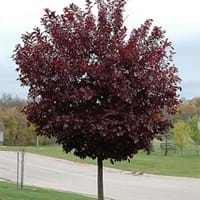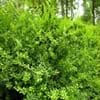Life Span
Perennial
Perennial
Origin
North America, United States, Northeastern United States, Mid-Atlantic United States, Southeastern United States, North-Central United States, South-Central United States, Texas
North America, Europe, Western Asia
Types
not available
lupulus , cordifolius , lupuloides , neomexicanus , pubescens
Number of Varieties
Not Available
Habitat
Boggy areas, Fens, Fields, meadows, Swamps, Woodlands
ditches, Lake margins
USDA Hardiness Zone
4-9
4-8
Sunset Zone
1a, 1b, 2a, 2b, 3a, 3b, 4, 5, 6, 7
A2, A3, 1a, 1b, 2a, 2b, 3a, 3b, 4, 5, 6, 7, 8, 9, 10, 14, 15, 16, 17, 18, 19, 20, 21
Habit
Thicket/Colonizing
Vining/Climbing
Minimum Width
Not Available
Flower Color
Not Available
Green, Magenta
Flower Color Modifier
Not Available
Bicolor
Leaf Color in Spring
Not Available
Chartreuse, Yellow green
Leaf Color in Summer
Not Available
Dark Green, Light Yellow, Yellow green
Leaf Color in Fall
Not Available
Yellow, Yellow green
Leaf Color in Winter
Not Available
Light Green
Leaf Shape
Oblovate
Lobed and toothed
Plant Season
Spring, Fall, Winter
Spring, Summer, Fall
Sunlight
Full Sun, Partial Sun
Full Sun, Partial Sun
Type of Soil
Clay, Loam
Clay, Loam
The pH of Soil
Acidic, Neutral, Alkaline
Acidic, Neutral
Soil Drainage
Average
Average
Bloom Time
Late Spring
Summer
Tolerances
Not Available
Drought
Where to Plant?
Ground, Pot
Ground
How to Plant?
Divison, Seedlings
Semi-hardwood cuttings, Softwood cuttings
Plant Maintenance
Medium
Medium
Watering Requirements
Keep the ground moist but not water-logged
Keep ground moist, Keep the Soil well drained
In Summer
Lots of watering
Lots of watering
In Spring
Moderate
Moderate
In Winter
Average Water
Average Water
Soil pH
Acidic, Neutral, Alkaline
Acidic, Neutral
Soil Type
Clay, Loam
Clay, Loam
Soil Drainage Capacity
Average
Average
Sun Exposure
Full Sun, Partial Sun
Full Sun, Partial Sun
Pruning
Prune after flowering, Prune in early spring, Remove damaged leaves, Remove dead branches, Remove dead leaves
In Early Autumn, Remove damaged leaves, Remove dead branches, Remove dead leaves
Fertilizers
All-Purpose Liquid Fertilizer, Compost, Fertilize every year, Mulch, Nitrogen
All-Purpose Liquid Fertilizer, General purpose fertilizer with an NPK ratio 3-1-2
Pests and Diseases
Aphids, Apple Maggot, Fall Webworm, Red blotch, Scale
Aphids, Japanese Beetles, Red spider mite
Plant Tolerance
Not Available
Drought
Flower Petal Number
Not Available
Not Available
Foliage Texture
Not Available
Medium
Foliage Sheen
Not Available
Matte
Allergy
Not Available
Unknown
Aesthetic Uses
Showy Purposes
Cottage Garden, Farmland, Informal Hedge, Wild gardens
Beauty Benefits
Not Available
Not Available
Environmental Uses
Air purification
Air purification
Medicinal Uses
Not Available
anti bacterial, increase urine flow, Insomnia
Part of Plant Used
Fruits
extracted oil, Flowers
Other Uses
Used As Food, Used as Ornamental plant
brewing beer
Used As Indoor Plant
No
No
Used As Outdoor Plant
Yes
Yes
Garden Design
Cutflower, Mixed Border, Screening, Wind Break
Bedding Plant, Edible, Feature Plant, Herb / Vegetable, Rock Garden / Wall, Vine
Botanical Name
ARONIA arbutifolia
HUMULUS lupulus 'Aureus'
Common Name
Red Chokeberry
Golden Hops
In Hindi
लाल Chokeberry
साधारण राज़क
In German
Rote Apfelbeere
Echter Hopfen
In French
Red Chokeberry
Houblon
In Spanish
rojo Chokeberry
Humulus lupulus
In Greek
κόκκινο Chokeberry
Golden Hop
In Portuguese
Red Chokeberry
Lúpulo
In Polish
Red aronii
Chmiel zwyczajny
In Latin
arbutifolia
Golden Hop
Phylum
Magnoliophyta
Magnoliophyta
Class
Magnoliopsida
Magnoliopsida
Family
Rosaceae
Cannabaceae
Clade
Angiosperms, Eudicots, Rosids
Angiosperms, Eudicots, Rosids
Tribe
Not Available
Not Available
Subfamily
Not Available
Not Available
Number of Species
Not Available
Importance of Red Chokeberry and Golden Hops
Want to have the most appropriate plant for your garden? You might want to know the importance of Red Chokeberry and Golden Hops. Basically, these two plants vary in many aspects. Compare Red Chokeberry and Golden Hops as they differ in many characteristics such as their life, care, benefits, facts, etc. Every gardener must at least have the slightest clue about the plants he wants to plant in his garden. Compare their benefits, which differ in many ways like facts and uses. The medicinal use of Red Chokeberry is Not Available whereas of Golden Hops is anti bacterial, increase urine flow and Insomnia. Red Chokeberry has beauty benefits as follows: Not Available while Golden Hops has beauty benefits as follows: Not Available.
Compare Facts of Red Chokeberry vs Golden Hops
How to choose the best garden plant for your garden depending upon its facts? Here garden plant comparison will help you to solve this query. Compare the facts of Red Chokeberry vs Golden Hops and know which one to choose. As garden plants have benefits and other uses, allergy is also a major drawback of plants for some people. Allergic reactions of Red Chokeberry are Not Available whereas of Golden Hops have Unknown respectively. Having a fruit bearing plant in your garden can be a plus point of your garden. Red Chokeberry has showy fruits and Golden Hops has showy fruits. Also Red Chokeberry is not flowering and Golden Hops is not flowering . You can compare Red Chokeberry and Golden Hops facts and facts of other plants too.





